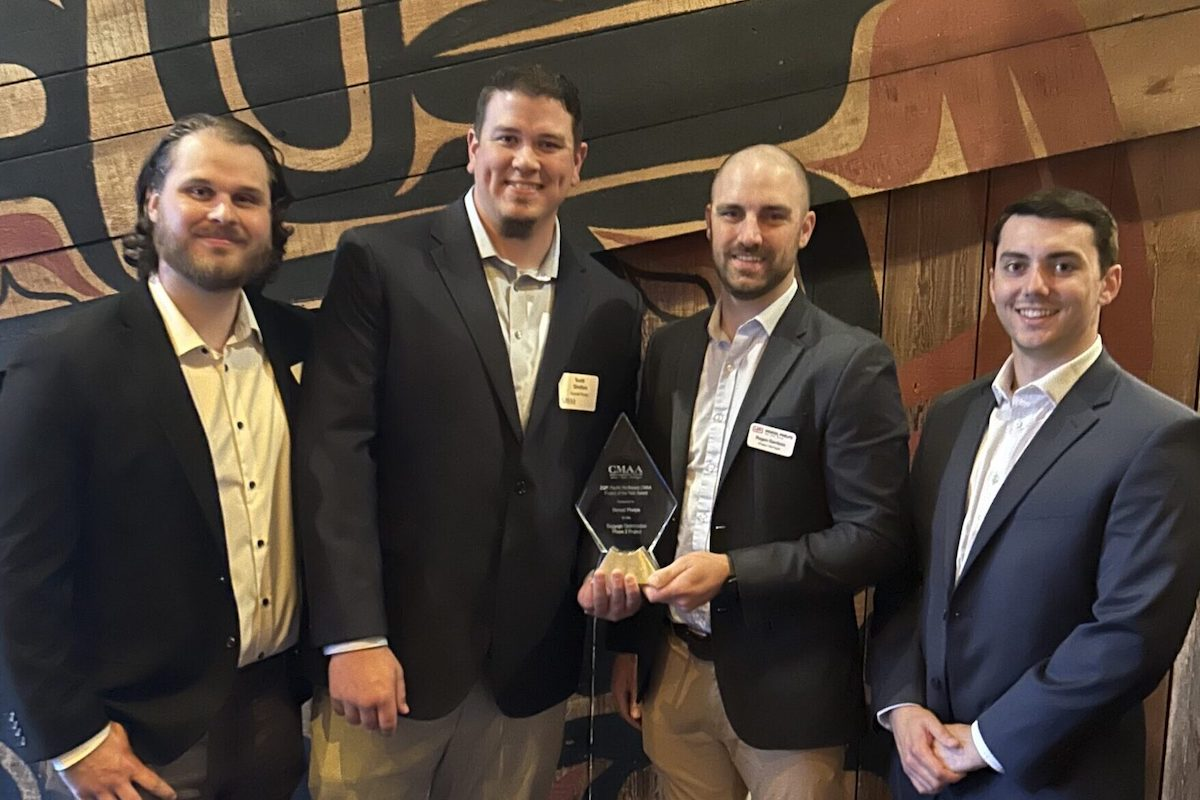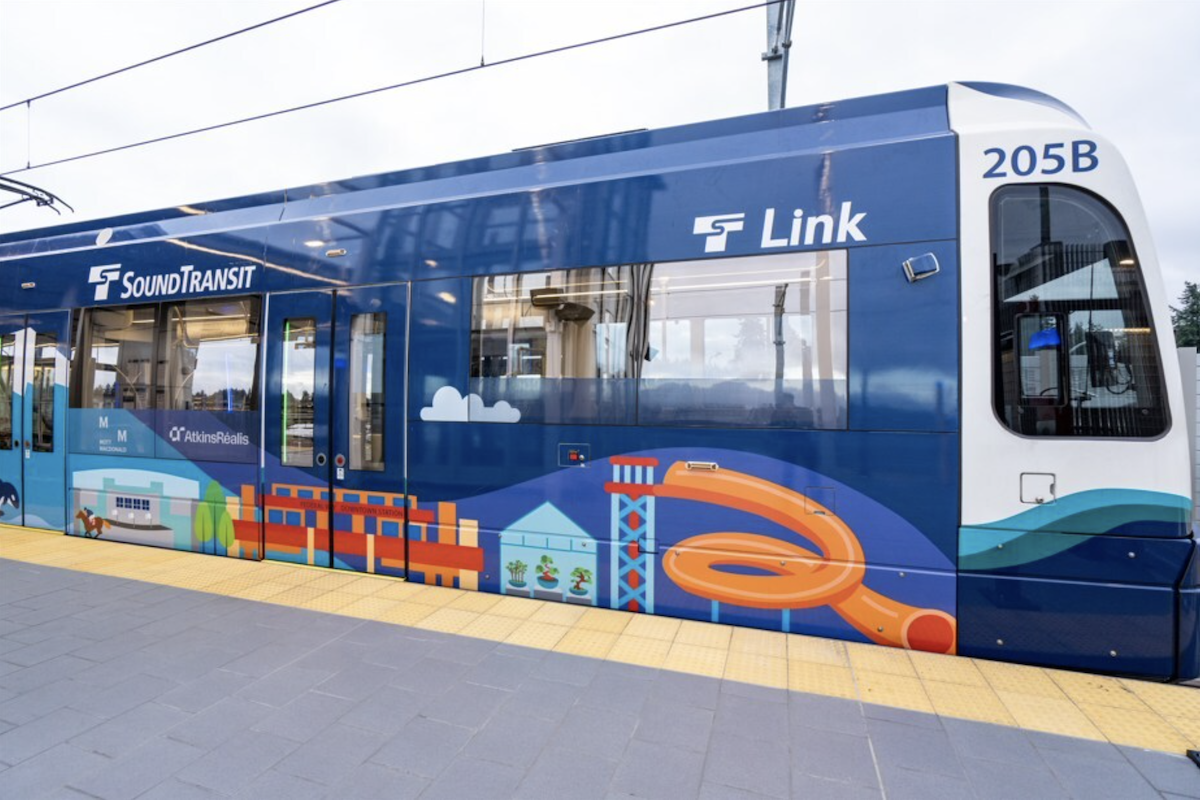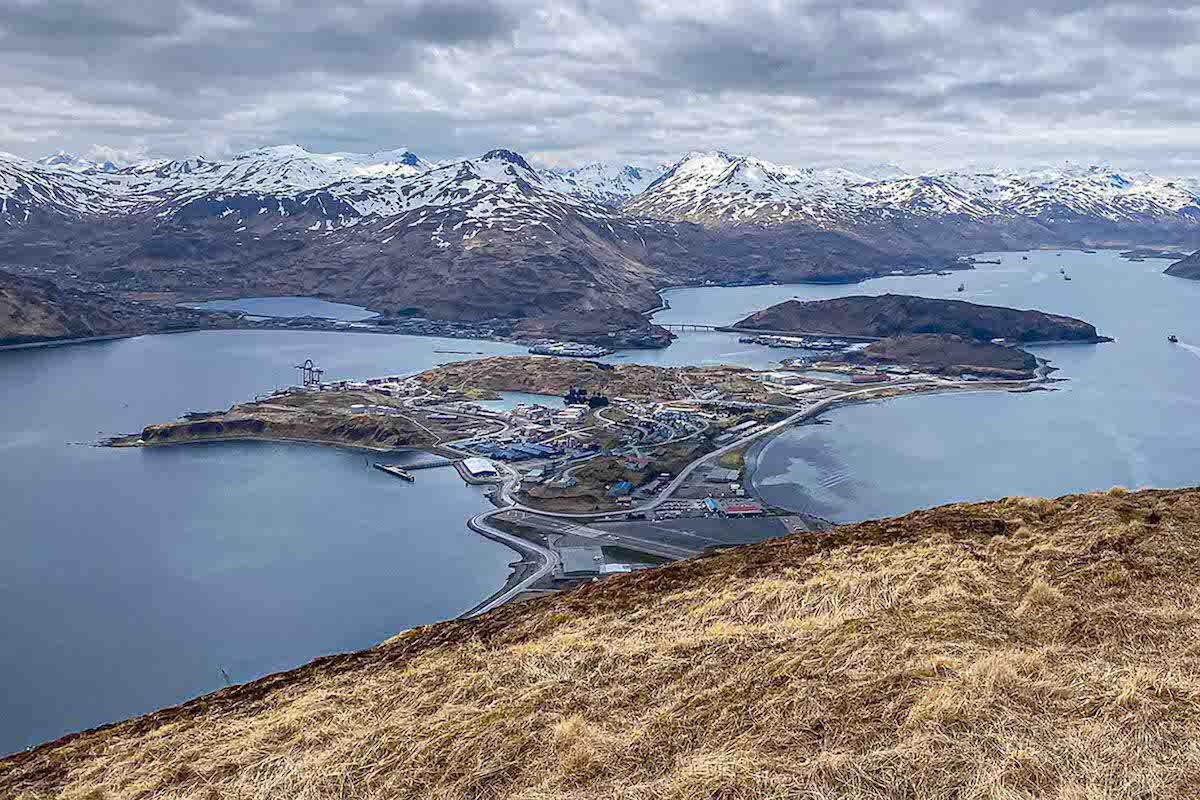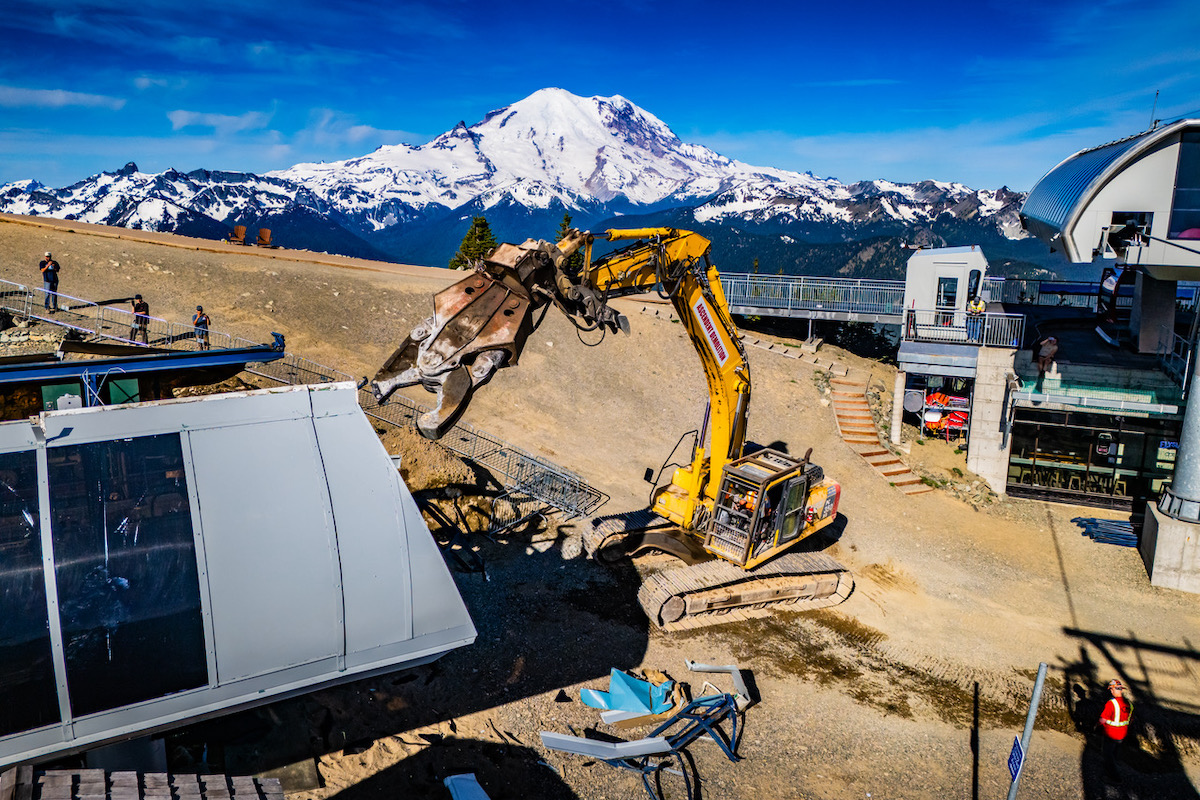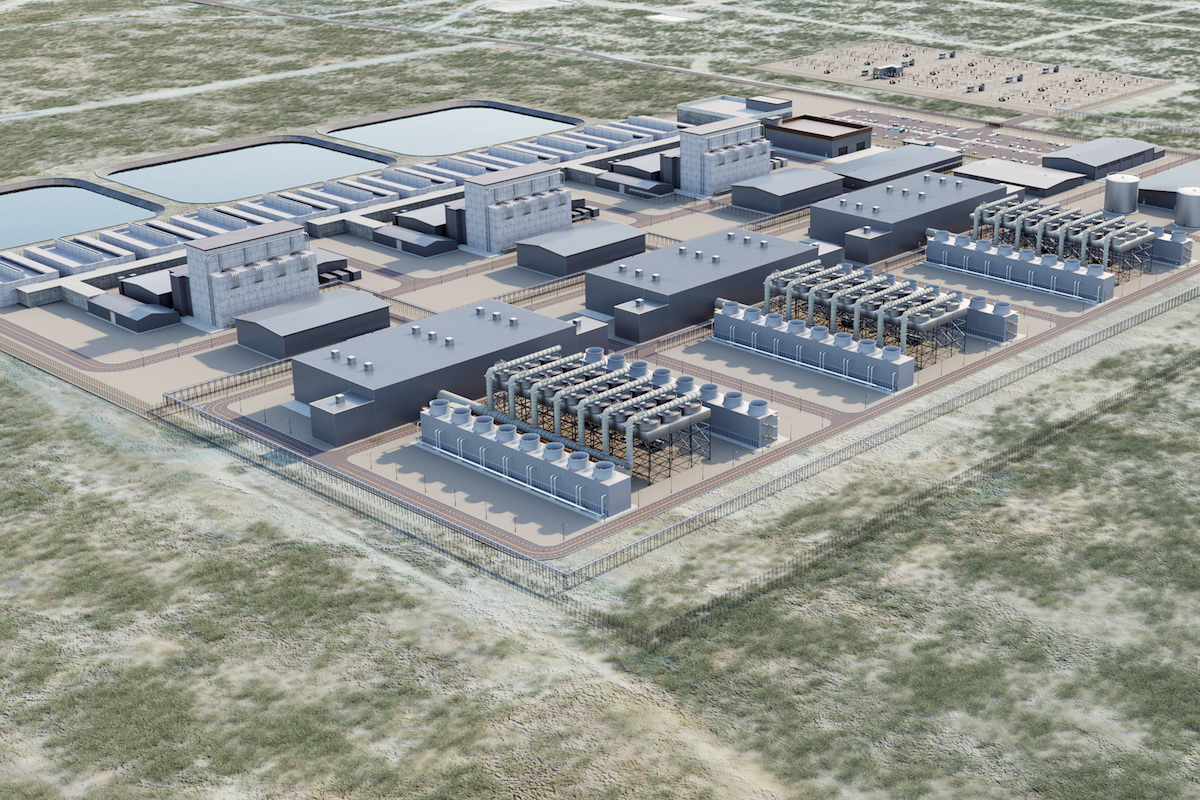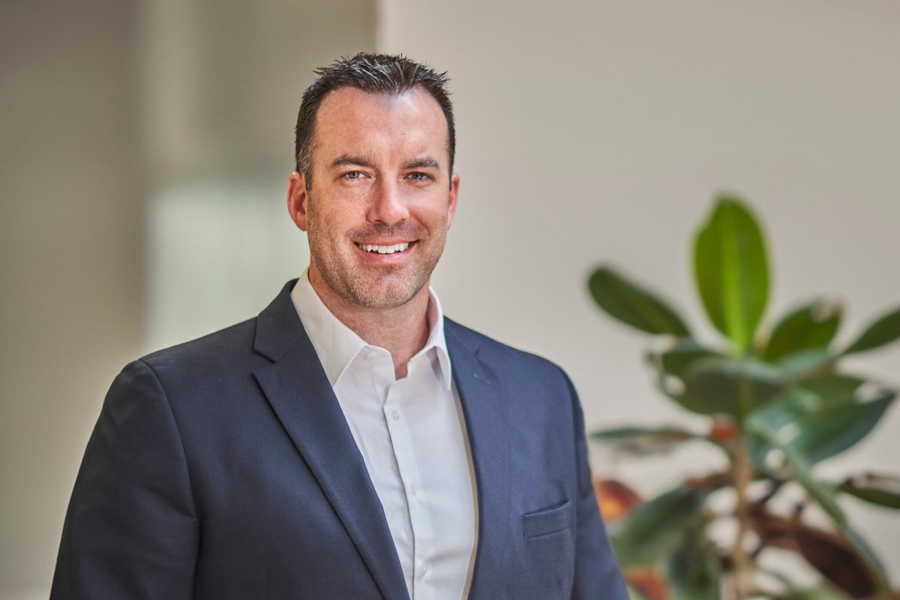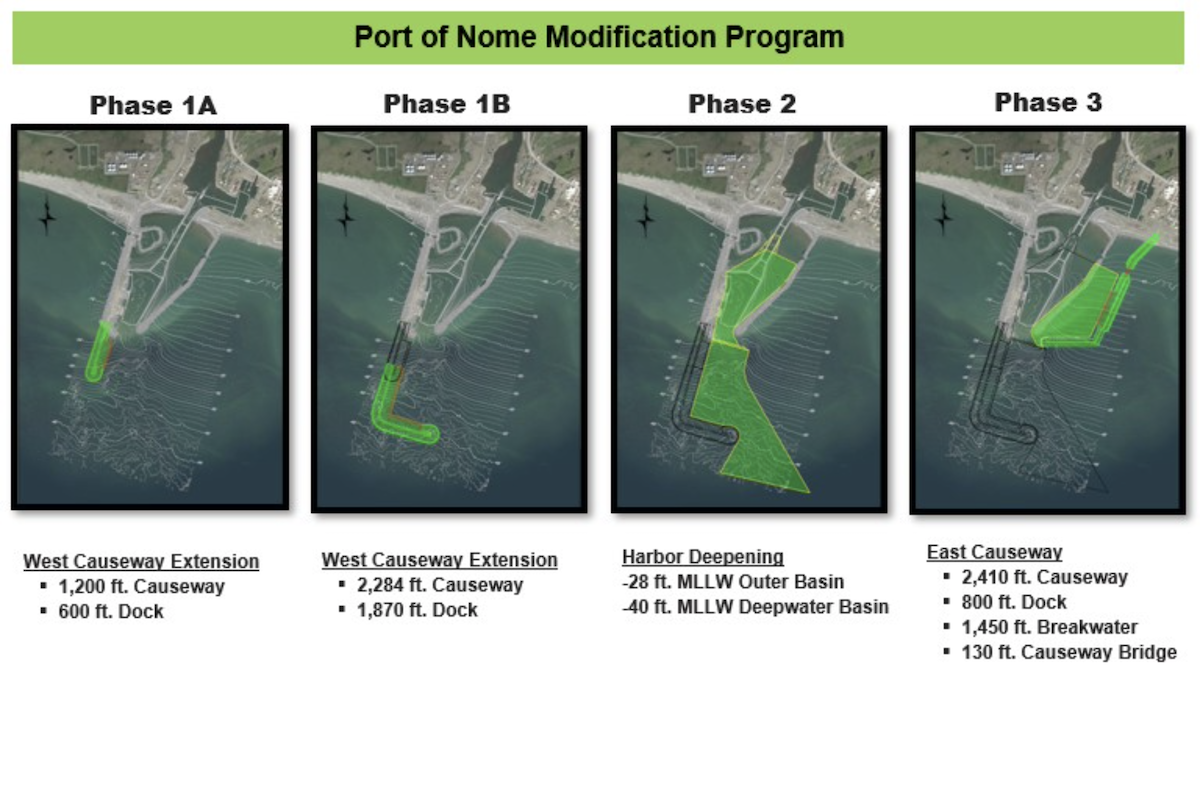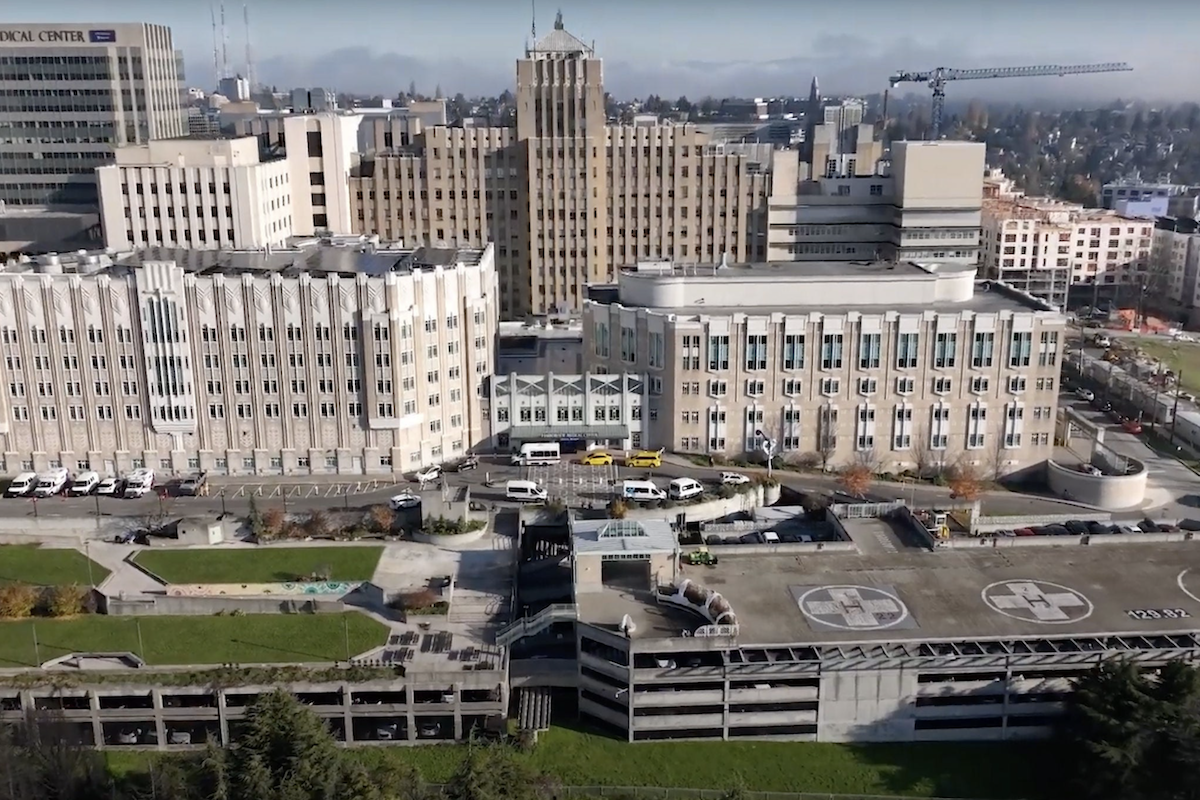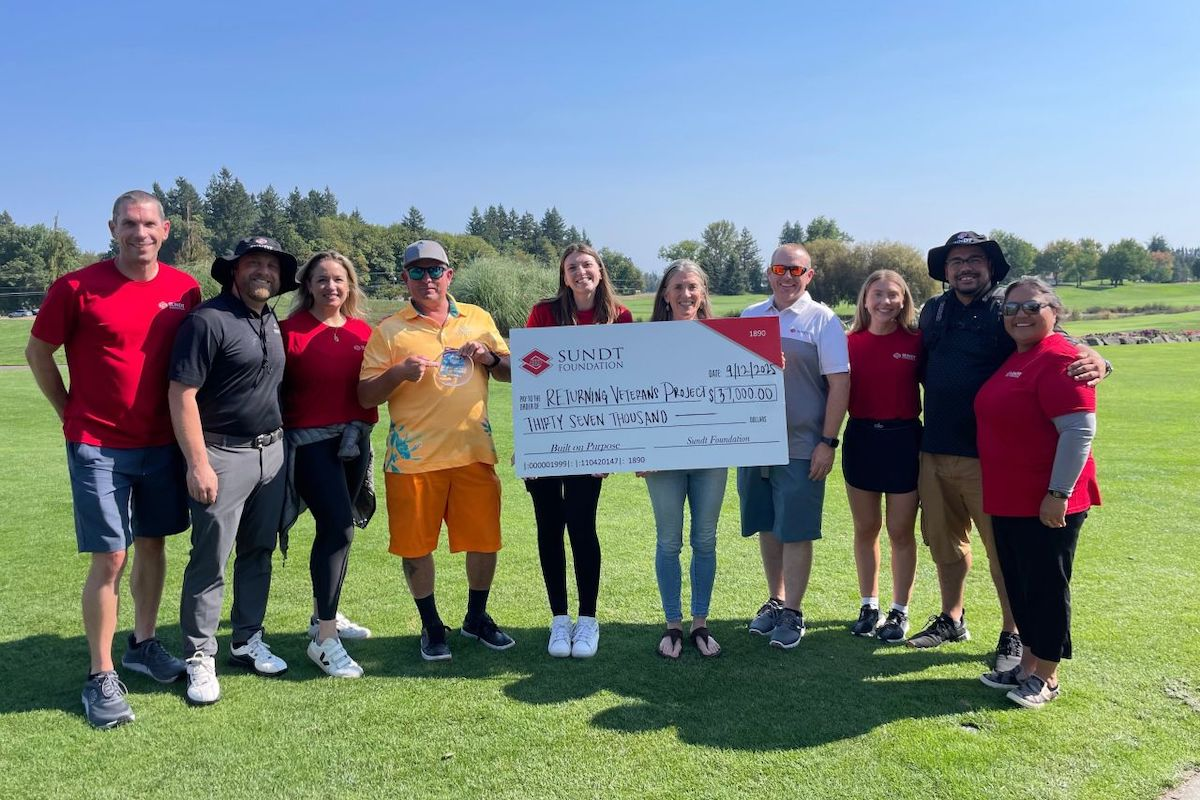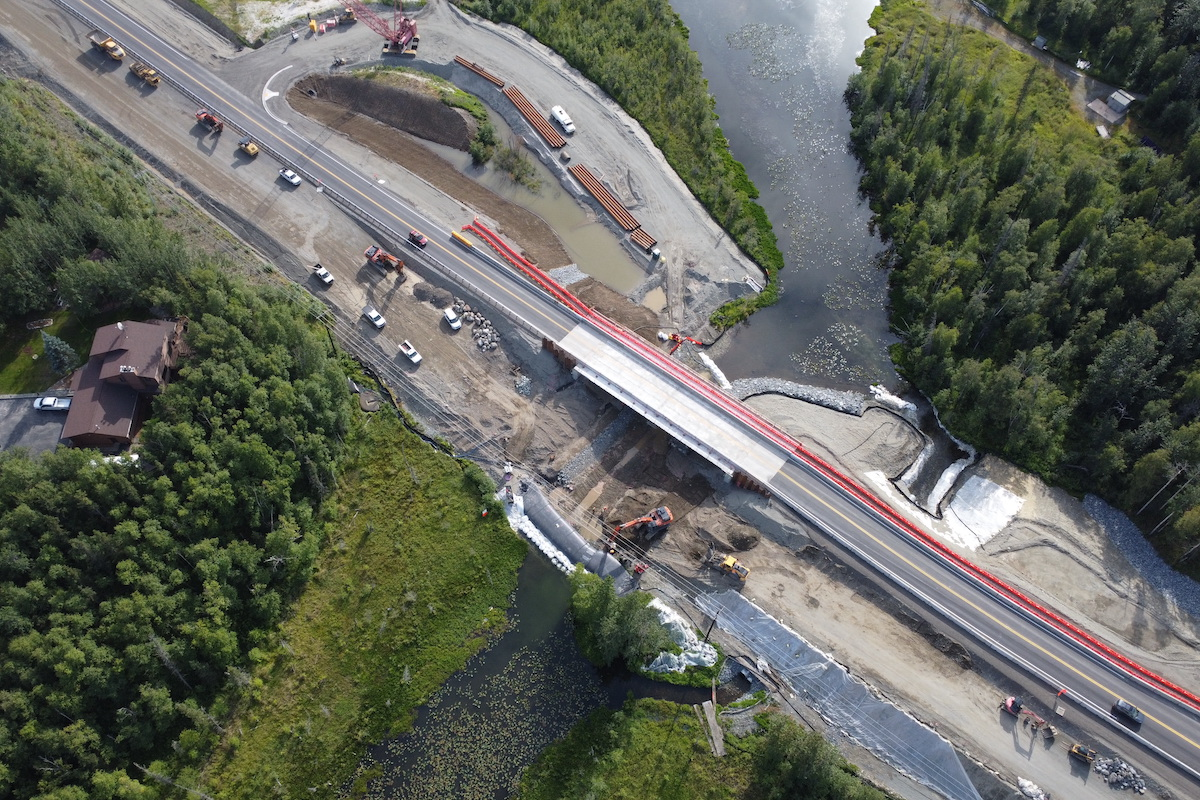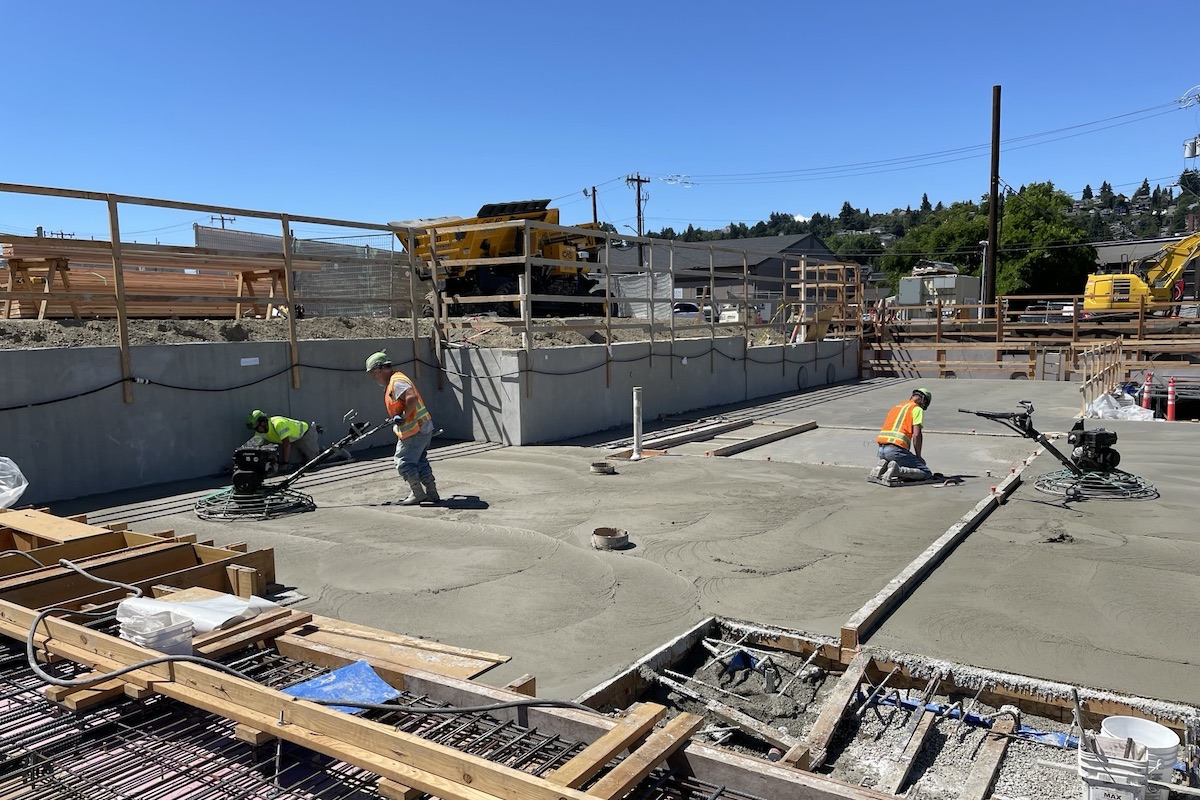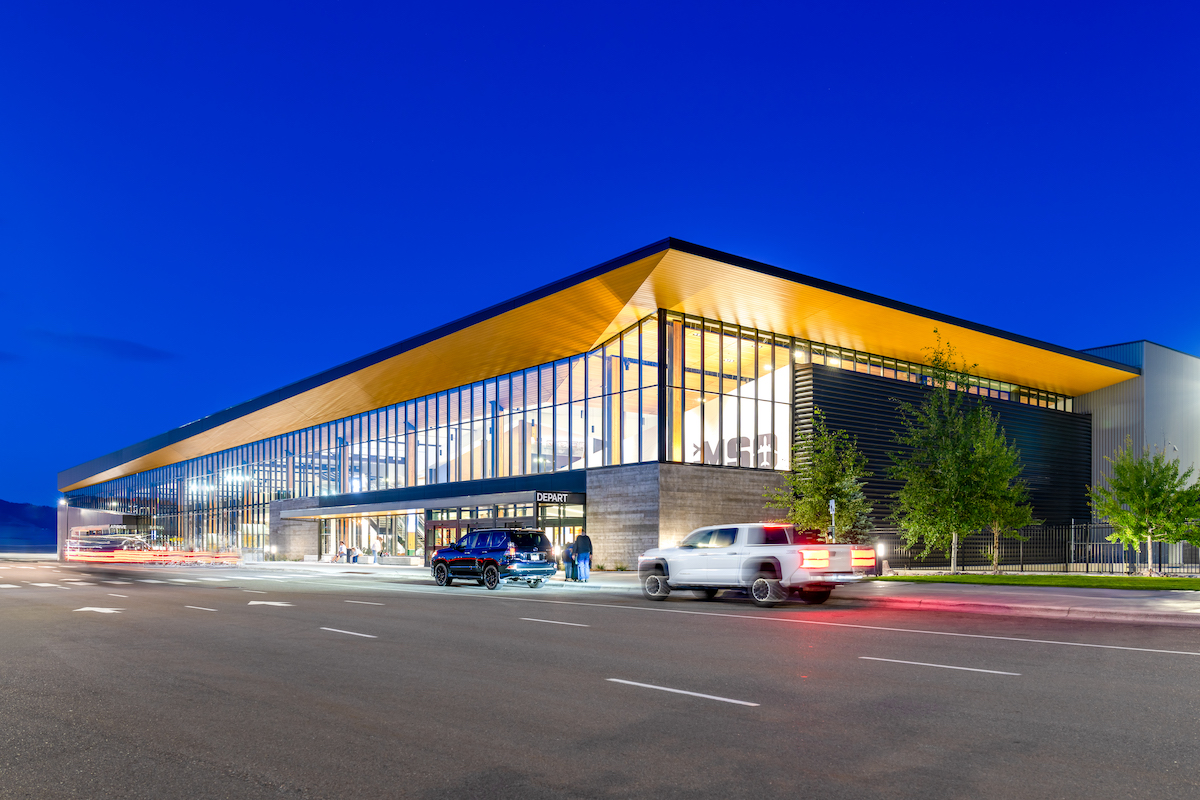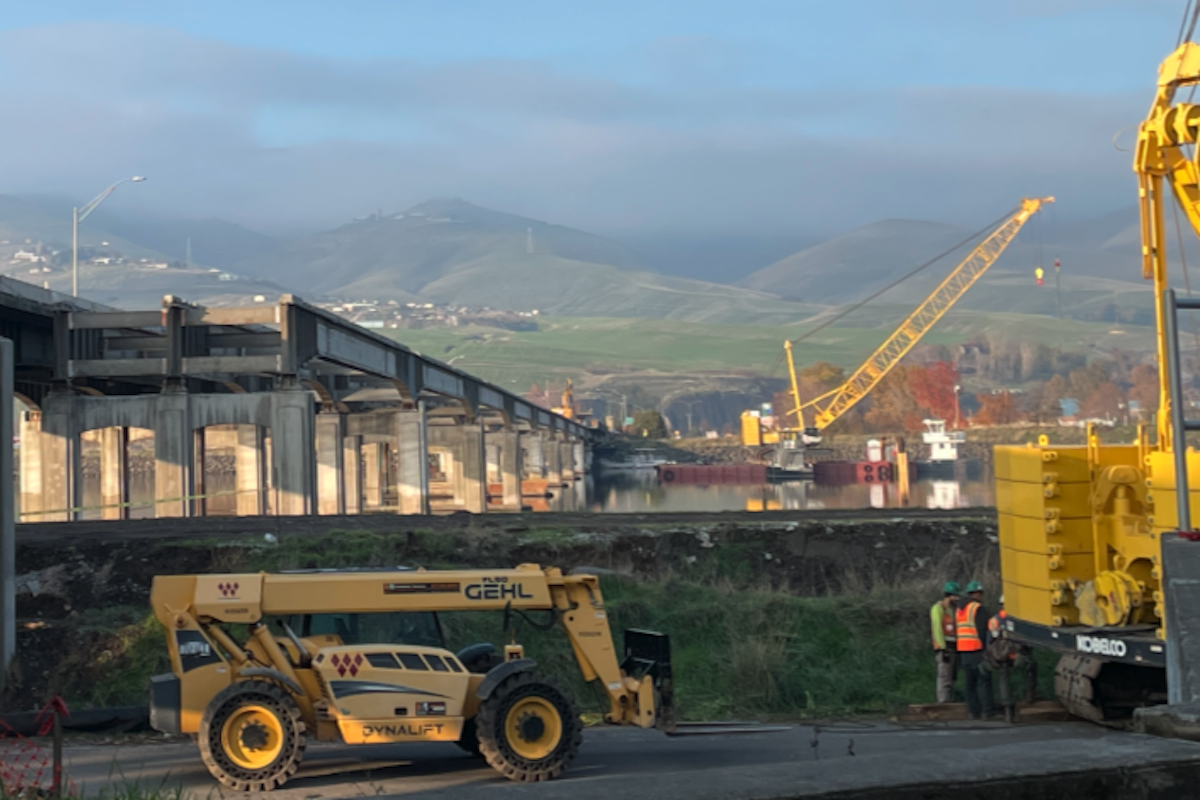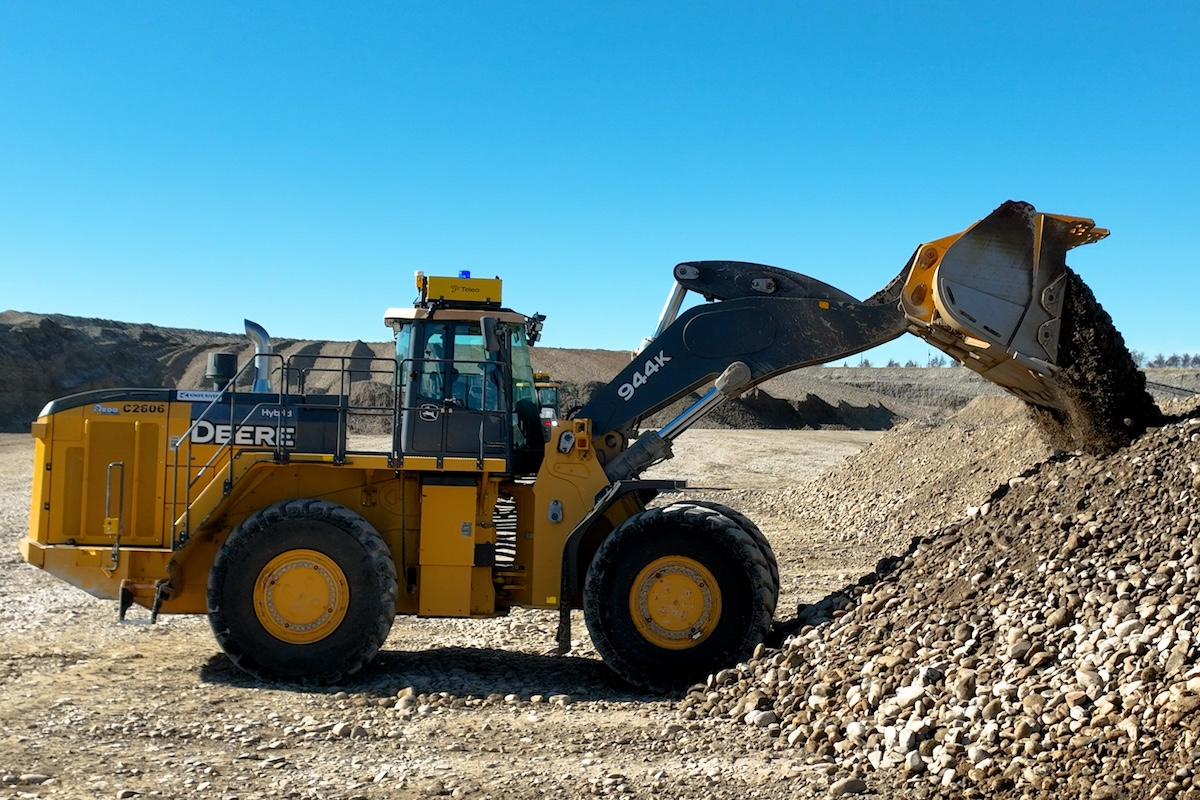According to data from the Oregon Department of Transportation (ODOT), U.S. 97 — the main north-south highway running through Central Oregon — had the highest ratio of fatalities to crashes in comparison to Oregon’s other major highways (Highway 101 and I-5). The highway connects Oregon to California and Washington, while U.S. 20 is the east-west highway. Both primary routes play a key role in Bend, helping to serve as the main connection to shopping, recreation, and businesses.
Deschutes County in particular, home to Bend, Oregon, saw the largest population growth in the state — growing nearly 5.2 percent from 2020 to 2023, an increase of over 10,000 people.
ODOT contracted Kiewit Infrastructure West for the job. The overall funding for the design-build project stood at $175 million and carried an aggressive project delivery schedule, slated for completion by December of this year.
The second project, which runs along the Burlington Northern Santa Fe (BNSF) Railroad, enhances the U.S. 97 corridor from Empire Avenue up to just north of Cooley Road, and calls for access control alignment that features three new bridges. New features that will allow safe and efficient access to the area include: multi-use paths, wider bike lanes, a new bus stop, lower speed limits, and enhanced pedestrian and bike crossings throughout the project area.

| Your local Volvo Construction Equipment dealer |
|---|
| PacWest Machinery |
The project also includes roundabouts where U.S. 20 meets Robal Lane and Cooley Road. Roundabouts are known to reduce the possibility of fatalities and significantly reduce the possibility for severe crashes. They are also easier for pedestrians and bicyclists to navigate. Previously U.S. 20 had through traffic and stop signs.
“Robal Lane was a very dangerous intersection. It was very high in terms of severe crashes,” said Zach Davis, ODOT’s Bend North Corridor Resident Engineer. “Now it's easier for everyone in all directions to get onto and off of the highway and for pedestrians to get through.”
“This layer of rock was anywhere from 10 to 12 feet in depth, so we elected to do some urban blasting,” Davis said. “This specific basalt has a lot of pores. It has some special characteristics.”
Where the rock was especially deep, ODOT worked with Blasting Consultant Robert Cummings, PE, of Call & Nicholas Inc.; Urban Blasting Expert Matt Higgins of Quality Drilling and Blasting LLC; and Vibration Specialist Danyiel Lenz with Elite Explosives.
The contractor utilized a blasting plan which required a total of seven shots. The work was being performed directly adjacent to U.S. 97. Highway closures were necessary for periods that did not exceed 15 minutes at a time. With hundreds of residences in the vicinity, as well as a very old irrigation line, the contractor had to minimize the subsurface vibration force from a blasting operation.
“Urban blasting is sensitive, of course, as we have to minimize ground vibrations to eliminate the possibility of damaging structures in the immediate vicinity,” Davis said.
The team scheduled the blasts during the lowest traffic volume, time, and day of the week to try and minimize the impact to the community. According to Davis, there was no unintentional damage as a result of the blasting operations.
“There's always the possibility … shots go wrong and the highway is buried in rock, and then it takes 30 minutes to 40 minutes to actually clear it,” he said. “But in this case, they cleared every one of these shots and allowed traffic to go through in less than 10 minutes. So they were really well done.”
In May and July 2021, ODOT staff inspected the property and collected samples of building materials observed on the ground surface. According to Oregon’s Department of Environmental Quality (DEQ), laboratory results indicated that this material contained 10 percent chrysotile asbestos, commonly referred to as white asbestos.
Commercial use on the property had released strands of asbestos boards from buildings which had spread to the adjacent property. The team excavated to remove the contaminated soil.
According to Davis, there were “strands of asbestos material that you could go out and actually find. They were deep too. We had to excavate 2 feet down, and in some cases we were actually digging all the way down to bedrock to remove this contaminated soil.”
“When we bid the project, we weren't aware of the full quantity because there were access issues to these properties, specifically the BNSF property, and we weren't actually able to get in there and sample,” Davis said. “Ultimately, when we were able to get in there to sample, we identified a significant quantity of asbestos-contaminated soil.”
DEQ stated that the material present is commonly referred to as cement asbestos board and is considered a “non-friable asbestos-containing material.” Non-friable asbestos products are solid, rigid, and cannot be crumbled, pulverized, or reduced to powder by hand pressure. The asbestos fibers are tightly bound and are not normally released into the air.
Encapsulating the contaminated soil on site required a regulatory agency review and permit, primarily performed through DEQ. Certified contractor, 3 Kings Environmental Inc., wrapped the contaminated soil in geotextile fabric, sealed it with caution tape, and encapsulated it with clean soil. They then buried the soil in the bottom of an embankment, delineating where the contaminated soil started to separate it from all other soil in the area, stopping migration from the encapsulated area.
“We intentionally placed it deep, away from finished surfaces to ensure that we minimized the probability that this contaminated soil may be penetrated in the future by either a guard rail post or someone laying pipe,” Davis said.
DEQ said that custom-printed utility warning tape stating, “Asbestos Hazard - Do Not Disturb,” has been secured to the geotextile at regular spacing to help prevent accidental disturbance, and marker signs have been placed in the highway embankment above and around the perimeter of the encapsulation. Each marker sign will state “No Dig Area” with instructions to call the main ODOT Region 4 phone number and ask for ODOT Geology. The Environmental Cleanup Site Information Database site number will also be included on the markers.
“Hauling this material to a landfill would've cost about a half a million dollars,” Davis said. “The as-constructed condition of this encapsulation was $113,000.”
“There's a really great partnership for the field operations with the contractor, the ODOT, and with all the local agency partners,” Davis said. “Everyone's worked together really well. [Kiewit] is efficient. We’ve had really high-quality construction. The quality of the bridge construction has been outstanding. I mean, it's really, really high-quality work, and the worker safety on the project has been top notch, too.”
The U.S. 20 project was completed in October of 2023, over a month ahead of schedule. The team is on track to complete the U.S. 97 project before its December 24th, 2024, completion date.






















